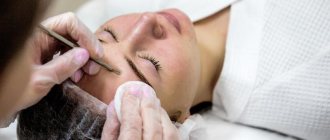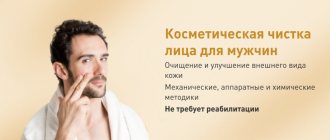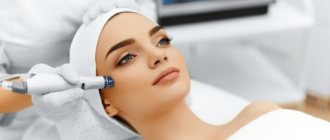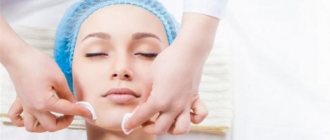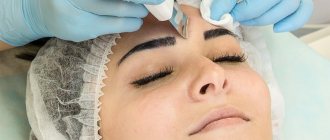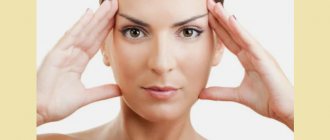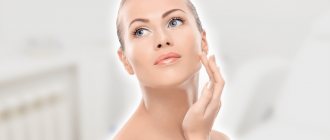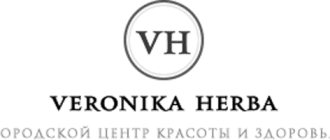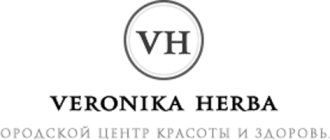Facial cleansing performed in our clinic will help you improve your skin health, restore its tone and normal nutrition. Cosmetic facial cleansing will help restore skin breathing, free it from fat and dirt, dead cells, and restore a healthy appearance and velvety feel.
Deep facial cleansing is necessary for everyone who values youthful and healthy skin. And for people with problem skin, acne and blackheads, this procedure should be carried out at least once a month.
Clients of the OK! can take advantage of the facial cleansing service, which is performed using the latest equipment and advanced cosmetics.
The result of deep cleansing of the facial skin is exfoliation of dead particles, removal of acne and blackheads, cleansing the skin of impurities and toxins, stimulating metabolism and blood circulation. After cleansing the skin, it begins to breathe better. Fewer and fewer new acne, pimples and blackheads are formed with each procedure. And they disappear.
Why is professional facial cleansing better than home cleansing?
Self-indulgence in such an important issue as facial skin health can be fraught with many troubles. You can introduce an infection and increase existing inflammation. Inept actions can even lead to acne becoming chronic. It is almost impossible to provide the necessary sterility at home. Only a professionally performed facial cleansing procedure provides excellent results - clean, smooth and even skin without blackheads and acne.
In addition, prices for facial cleansing in the Centers are OK! completely democratic and accessible to many. It is not surprising that today facial cleansing in our clinic is one of the most popular cosmetic procedures.
Pros and cons of the procedure
The main advantages of manual mechanical cleaning:
- The skin is noticeably rejuvenated. During the procedure, intensive exfoliation of the upper keratinized layer of the epidermis occurs and at the same time natural regeneration processes are activated. Thanks to this effect, the skin rejuvenates, becomes fresher, smoother, and radiant.
- The pores become narrower. Manual manipulations effectively cleanse pores of impurities, sebaceous plugs, blackheads, comedones, and blackheads. Also, after the procedure, blood circulation and metabolism improve, the functioning of the sebaceous glands is normalized, which leads to narrowing of pores and leveling of the microrelief.
- The number of inflammatory elements decreases. After manual cleaning, foci of inflammation disappear, which significantly reduces the risk of scarring, age spots, and post-acne.
- The permeability of the dermis improves. Thanks to this effect, the active ingredients contained in skin care cosmetics penetrate efficiently into the cells of the epidermis, nourishing them, saturating them with vitamins and other beneficial substances.
- Skin breathing improves. During the procedure, the cosmetologist removes dead skin cells, which helps open pores and improve skin respiration.
- Evening out complexion. Due to the exfoliating effect, mechanical cleaning will help get rid of this problem. Some time after the procedure, the skin will acquire an even, beautiful, healthy shade.
The technique has disadvantages, the most significant of which are:
- Pain during manipulation. Despite the fact that during the procedure the cosmetologist makes neat, careful movements, for people with a high sensitivity threshold, even such manipulations can cause discomfort.
- Injury to the skin and blood vessels. Mechanical compression can cause injury to the skin, especially if it is dry and depleted. Manual cleaning is not carried out for patients with fragile, brittle vessels, since during manipulation there is a risk of damaging them.
- Development of inflammation and scarring. If the patient has inflamed elements or ulcers on his face, cleaning is prohibited in order to avoid the spread of the infectious process. Scars occur when the skin is severely injured, which is a consequence of improper manipulation.
- Skin infection. This happens when the cosmetologist does not follow the rules of sterility and disinfection. Pathogenic microflora remaining on hands and instruments can cause serious inflammatory complications and spread throughout the body.
- Need for rehabilitation. Almost always after the procedure, the skin turns red, slight swelling forms, and sometimes bruises. Therefore, the patient needs rehabilitation recovery, during which it is important to follow the cosmetologist’s recommendations and use the care products prescribed by him.
What can you achieve by cleansing your facial skin?
For any skin condition, after cleansing the face, the skin becomes more well-groomed and smooth. It is easier to apply makeup on it. The skin responds better to nourishing and healing creams - their action becomes more effective. Pore size decreases. This significantly reduces the likelihood of skin inflammation. Like peelings, facial cleansing for acne helps remove dead cells and stimulates renewal and rejuvenation of facial skin. It is not possible to cope with acne solely by cleansing your face. But this procedure is effectively used at one of the stages of skin treatment.
Care after acid peeling
Cleaning with exfoliants is the main cosmetology trend in recent years. This is the most gentle procedure using high concentration fruit acids. They dissolve dead cells of the stratum corneum and cleanse the pores from the inside - they treat even complex forms of acne and tighten the texture of the face. In addition, dry cleaning helps cope with photoaging: it stimulates the production of collagen and elastin, smoothes wrinkles, and removes pigmentation.
Despite the absence of physical damage, specific facial care after cleansing and peeling is still required. AHA and BHA acids increase sensitivity to ultraviolet radiation—be sure to apply sunscreen with 30 SPF or more before going outside.
Who is facial cleansing recommended for?
Cleansing the face of pimples, blackheads and blackheads is recommended for everyone, starting from adolescence.
If you have normal skin, it is enough to cleanse your face once a month. For oily and problem skin, facial cleansing should be done more often - once every 7-10 days. And dry skin, with proper and regular home care, requires professional facial cleansing only once every 3-4 months.
Regular facial cleansing is especially important for aging skin with reduced tone. After all, it allows you to effectively remove toxins and waste, stimulate metabolic processes, and significantly increase the elasticity of the skin.
Comparative characteristics
| Cleaning | Peeling | |
| Type of impact | Mechanical | Mechanical, chemical, biological, hardware |
| Depth of influence | Superficial | Superficial, middle, deep |
| Mechanism of action | Skin cleansing to remove minor imperfections and impurities | Skin exfoliation to combat mid to deep epidermal problems |
| Effect | Cleansing the skin of comedones, sebaceous plugs and other impurities, smoothing the skin surface, improving blood microcirculation | Rejuvenation, increased tone, reduced skin greasiness, elimination of age spots, scars, post-acne, wrinkles |
| How is the procedure performed? | By exposing the skin to special mechanical instruments or an ultrasound machine | By exposing the skin to special microparticles, acids, alkalis, enzymes or lasers, radio waves |
| When can it be done? | All year round | Autumn-spring period (some options - in summer) |
| Minimum number of procedures for visible effect | The effect is noticeable after the first procedure (it is not recommended to do mechanical cleaning more than 2 times a year) | 5-10 procedures (does not apply to deep peelings) |
Are there any contraindications for facial cleansing?
It is not recommended to cleanse the skin of the face during acute colds and inflammatory diseases, immediately after operations and on menstruation days. For eczema, psoriasis, dermatitis, and allergic reactions. Use with caution in case of allergies, hormonal dependence, psoriasis and eczema. And during heat and severe frosts, only gentle types of facial cleansing are carried out.
On the contrary, ultrasonic facial cleansing may be indicated for those who have medical contraindications to mesotherapy.
Is it possible to combine cleansing and peeling?
Cosmetologists have universal procedures in their arsenal that simultaneously cleanse pores and eliminate dead cells. If there are no serious skin problems that require intensive targeted treatment, but you just need to give your face a fresh and healthy look, then such procedures will be an excellent solution.
The complex effect is provided by:
- Ultrasonic skin cleansing. This method not only promotes gentle cleansing of pores, but also removes dead skin cells of the epidermis;
- Carbon laser peeling. In this case, coal particles penetrate the pores, and then, under the influence of laser radiation, push out impurities from them, while exfoliating dead cells.
In addition, as already mentioned, during combined skin cleansing, acid peeling compounds can be used to soften and remove the stratum corneum. Thus, the procedure has a complex effect, simultaneously cleansing and exfoliating the epidermis.
Both peeling and cleansing are effective procedures that improve the condition of the skin, maintaining its natural beauty and health. The choice of the appropriate procedure is made based on the needs of the skin and its individual characteristics.
Types of facial cleansing
At the Centers OK! You can take a course of ultrasonic cleaning, mechanical and manual (manual) facial cleansing.
The cosmetologist decides which facial cleansing is best for you after assessing the condition of your skin. But manual facial cleansing is considered the most effective. It is especially recommended for those with combination and oily skin. If your skin is normal or dry. If there is very little contamination, then ultrasonic facial cleansing will be quite sufficient.
Ultrasonic facial cleansing
Its effect is based on the properties of ultrasound (ultra short waves).
The procedure is very gentle, allows for deep cleansing of the face, effectively freeing the skin of impurities and toxins, sebum. Ultrasonic facial cleansing is perfect for caring for problem skin.
In addition, during the process of ultrasonic facial cleansing, the skin is massaged and wrinkles are smoothed out. Cleansing facial skin with ultrasound has a bright rejuvenating effect. After it, the skin becomes renewed and soft.
Before cleaning, the skin is treated with a tonic based on mineral water or a special gel. After which it is exposed to an ultrasonic facial cleansing device. As a result, the pores open, contaminants come to the surface and are immediately removed.
Advantages
ultrasonic facial cleansing
try
- Cleaning does not require any preparation before the procedure, which significantly reduces the time it takes (only 15-20 minutes compared to other types of facial cleansing).
- Gentle exfoliation of dead cells.
- Effective smoothing of skin turgor.
- The ability to regulate sebum production.
- Significant narrowing of pores.
If there are obvious skin defects, ultra sound facial cleansing is recommended together with more pronounced methods. For example, with vacuum cleaning.
Has ultrasonic facial cleansing and contraindications. For example, it cannot be performed on leather reinforced with gold threads.
Additional effects of ultra sonic cleaning:
- skin hydration,
- relaxation of facial tissues,
- toning of facial muscles,
- improving blood circulation and skin tone.
With ultrasonic facial cleansing, the skin is not only freed from impurities and excess oil, freshened, but also becomes healthier. After cleansing the facial skin, pores are reduced, scars heal faster and irritation goes away.
After cleansing your face, you can immediately “go out in public,” meet friends, go to work, and visit public places.
Manual (manual) facial cleansing
One of the most effective and deep facial cleansing methods. Consists of two main stages. Before cleansing your face, the pores are opened by steaming or vaporization (using a mixture of wet steam and ozone). After which the cosmetologist manually, painstakingly treats each clogged pore with the pressure of his fingers. After the facial skin has been cleaned, it is wiped with an antiseptic. An anti-inflammatory mask is applied to it, and then a soothing cream. Manual (manual) facial cleansing is especially effective for problematic and oily skin with multiple defects. Allows you to remove comedones and inflammatory elements, subcutaneous wen, boils, mature pimples and blackheads. But it is rarely used as an independent method of cleansing the skin. Most often in combination with hardware facial cleansing.
Manual facial cleansing is a rather painful procedure that causes severe redness of the skin, which goes away after a day. Moreover, the more inflammation there is on the face, the more painful the procedure becomes. The fact is that steamed skin cools down in about 20 minutes. After which the pores begin to close. So, if the skin is problematic, the facial cleansing procedure is divided into several sessions. And it is carried out until all the pores are cleaned.
Mechanical facial cleansing
This method is very similar to manual cleaning, with the only difference being that in this case special tools are used to remove grease plugs and dirt from the pores - spatulas, a strainer. And also sterile wipes. If the sebaceous plugs are very deep, the specialist cleans the pores using a special spoon for the nose, an Una spoon (with a loop). And clogged comedones are pierced with a sterile Vidal needle.
Mechanical facial cleansing is a rather outdated and painful method of skin cleansing in a number of ways.
After mechanical cleaning
The facial skin is soothed with masks and massage and disinfected with an infrared lamp. Using healing clay, the pores of the face are tightened and the skin color is evened out. After mechanical cleansing of the face, you should not wash your face for 12 hours. You should also wipe your face with an alcohol-containing lotion for 2-3 days. You should not sunbathe or swim - otherwise there is a high risk of pigment spots appearing.
Contraindications for mechanical facial cleansing
- dry and sensitive skin,
- fragility of facial blood vessels,
- eczema, herpes and furunculosis
- hypertonic disease.
Also, specialists from the OK! perform gas-liquid attraumatic facial cleansing. You can familiarize yourself with its indications and features of the procedure here.
Indications for peelings
The main task of peeling is to remove the top layer of skin. As a rule, we are talking about keratinized cells (superficial exfoliation), but, for example, medium peels also affect the papillary layer of the dermis, providing a more pronounced effect.
Cosmetologists recommend exfoliation if:
- The skin is dull, the complexion is unhealthy, pale;
- The surface of the epidermis is uneven, there are small scars and scars (for example, post-acne);
- There is a greasy sheen, the skin is oily;
- There is superficial pigmentation;
- The epidermis peels off, there are small wrinkles and other signs of photoaging.
In youth, peelings are recommended to eliminate defects. In adulthood, this is an effective method of maintaining youthful skin.
Any peeling means damage to the skin. It can be as delicate and superficial as possible - such peelings can be carried out even at home. A more effective option is medium peels, which affect living cells and require rehabilitation. The appropriate type of peeling is selected by the cosmetologist after examination.
Until recently, women decided to undergo deep peeling, which was carried out exclusively in a hospital and was a deep chemical burn to the skin. Now this traumatic procedure has given way to safer and more controlled methods of rejuvenation.
Indications and contraindications
Facial cleansing is carried out under the following circumstances:
- Increased secretion of the sebaceous glands. During the day, any makeup comes off, and the skin shines like a greasy pancake.
- Enlarged pores. Normally, these microscopic holes should not be visible. Due to disturbances in the body, pores become enlarged and the skin becomes textured.
- Acne. This term is used as a collective term to refer to all the “companions” of oily skin: acne, comedones, etc.
It is better to avoid facial cleansing if:
- There is a tendency to epileptic seizures;
- At the time of the procedure, the patient suffers from an infectious disease;
- There is a history of bronchial asthma;
- The patient suffers from diabetes;
- At the time of the procedure, the patient is pregnant.
Critical days are not an absolute contraindication to facial cleansing. However, cosmetologists recommend prescribing the procedure no earlier than 7-8 days of the cycle. The fact is that during this period certain hormonal disruptions occur in the body. The pain threshold is significantly reduced, and skin regeneration occurs slowly.
